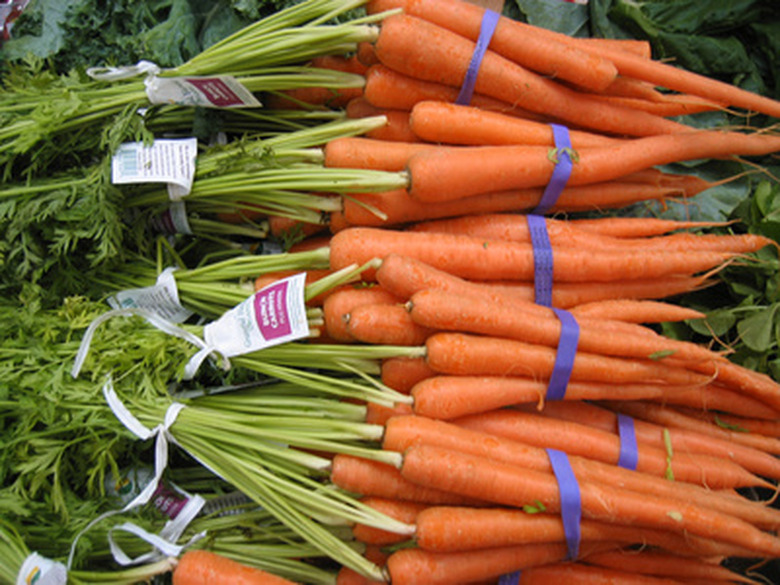How To Compost With Carrot Tops
Things Needed
- Green materials
- Brown materials
- Pitchfork or shovel
- Soil
- Garden hose
A good compost heap is a careful balance of nonspecific ingredients. Instead of thinking about adding a half-pound of carrot tops to your compost heap, think about adding a half-pound of nitrogen (or green material) to your compost heap. A balance of nitrogen, carbon (or brown material), oxygen and water is what makes a compost heap successful. Air is added by incorporating airy brown materials, such as shredded newspaper or corrugated cardboard. It is also incorporated when you turn your compost and expose different parts of it to atmosphere.
Step 1
Choose a suitable area for your compost heap. Compost heaps should ideally be placed over grass or bare soil, not concrete or asphalt. Placement under deciduous trees is ideal, because the sun will warm the heap early in spring. When the leaves return, they will shade the heap from excessive sun during the hottest days of summer.
- A good compost heap is a careful balance of nonspecific ingredients.
- A balance of nitrogen, carbon (or brown material), oxygen and water is what makes a compost heap successful.
Step 2
Place brown materials on the bottom of your heap to start. Shredded newspaper, dried leaves and twigs, and even dried plants are all valuable sources of brown material. Spoiled hay and straw are also wonderfully carbon-rich.
Step 3
Add a layer of green material on top of your heap. Think about lasagna, and how alternating roughly equal layers of different ingredients creates a singularly delicious experience. Carrot tops are nitrogen-rich green materials. Kitchen scraps of all types (including coffee grounds and dried eggshells) fall into this category. Human hair, excess pet fur, and grass clippings are also vital and useful green ingredients.
- Place brown materials on the bottom of your heap to start.
- Shredded newspaper, dried leaves and twigs, and even dried plants are all valuable sources of brown material.
Step 4
Continue alternating green and brown materials in roughly equal amounts until you run out. Add a layer of soil on top. Soil can be from elsewhere in your yard or garden and does not need to be specially purchased.
Step 5
Add water with your garden hose only if the materials you have added seem very dry. If you have been alternating green and brown materials in a fairly equal manner, the green materials should provide sufficient moisture initially.
Step 6
Turn the heap every week or so to expose new parts of it to air. If you notice that it is dry, or the weather has been especially hot, sprinkle a little water with your garden hose when you turn it.
- Continue alternating green and brown materials in roughly equal amounts until you run out.
- Add water with your garden hose only if the materials you have added seem very dry.
Step 7
Add new materials to your compost heap whenever you have them. To do this, burrow a small hole into the center of the heap and deposit the new material. Exactness of your guess as to the whereabouts of the center of the heap is not essential. The center is the hottest part of any compost heap, and is where the compost cooks and breaks down.
